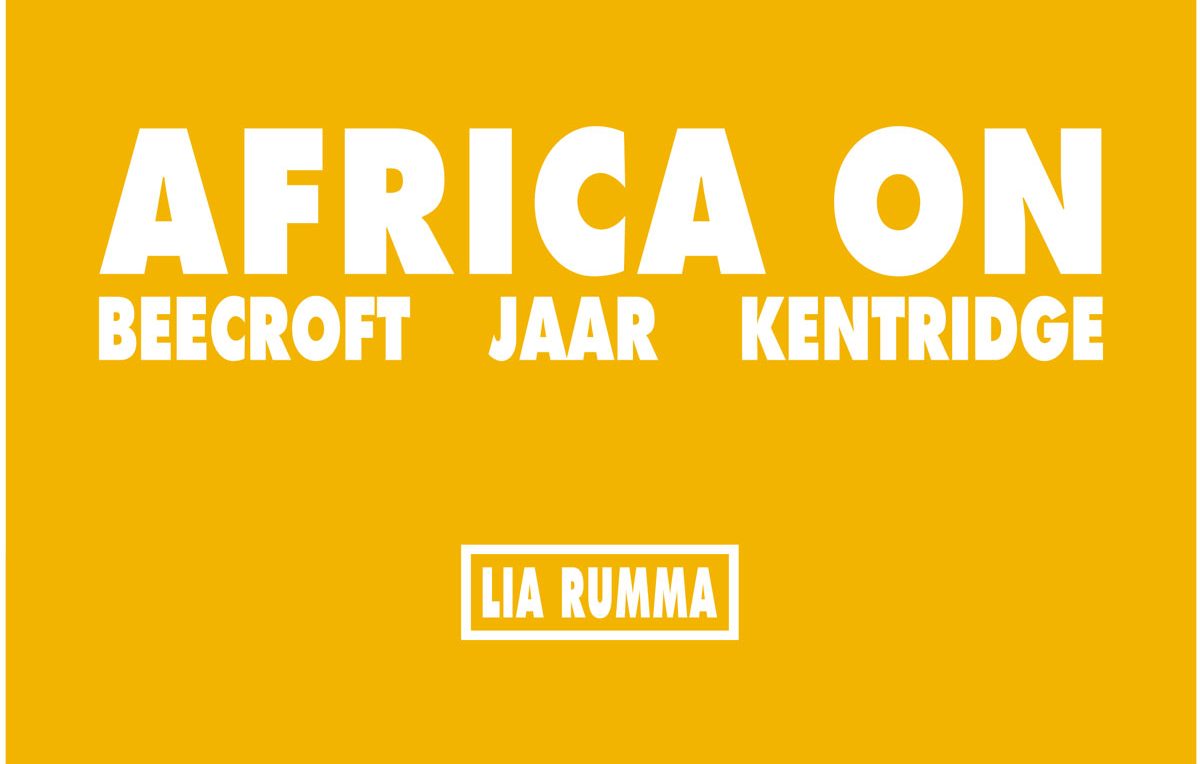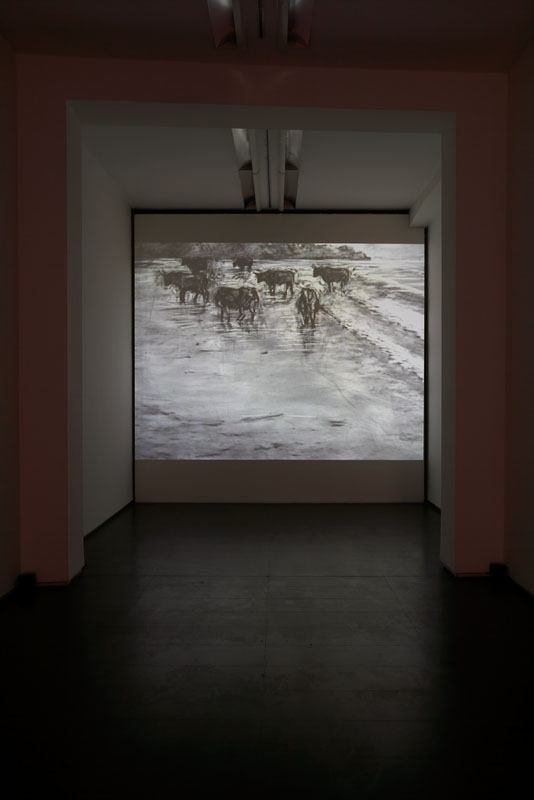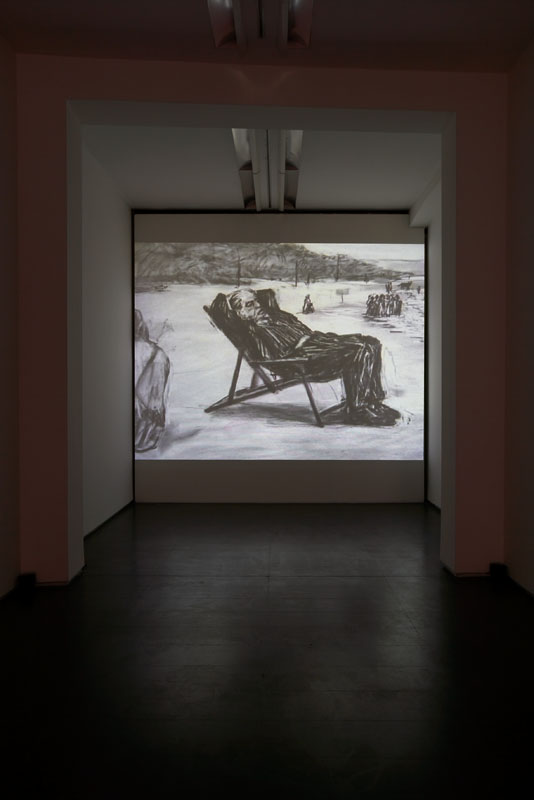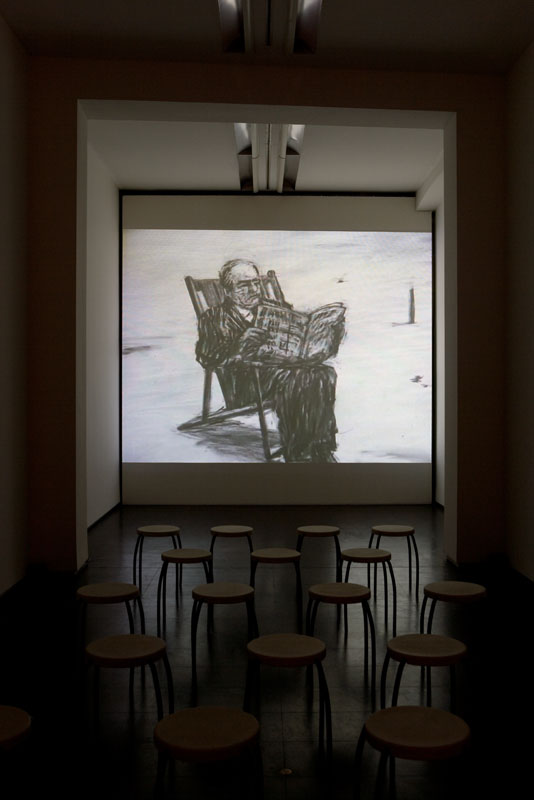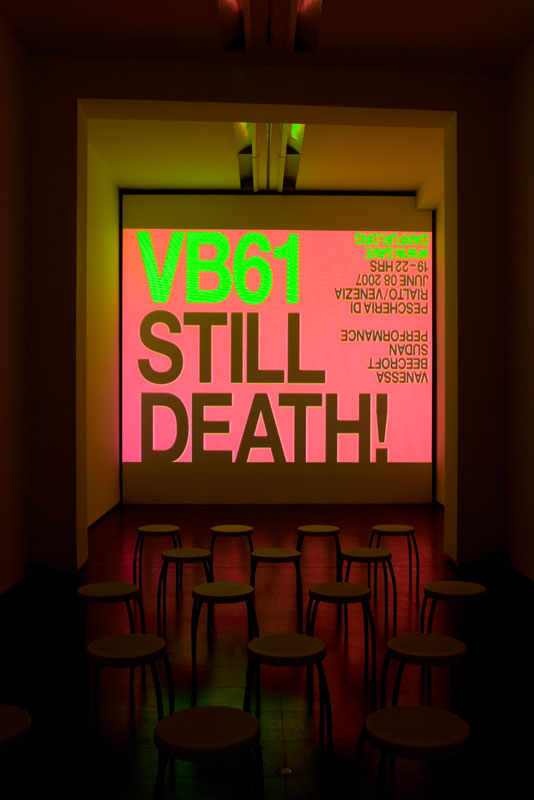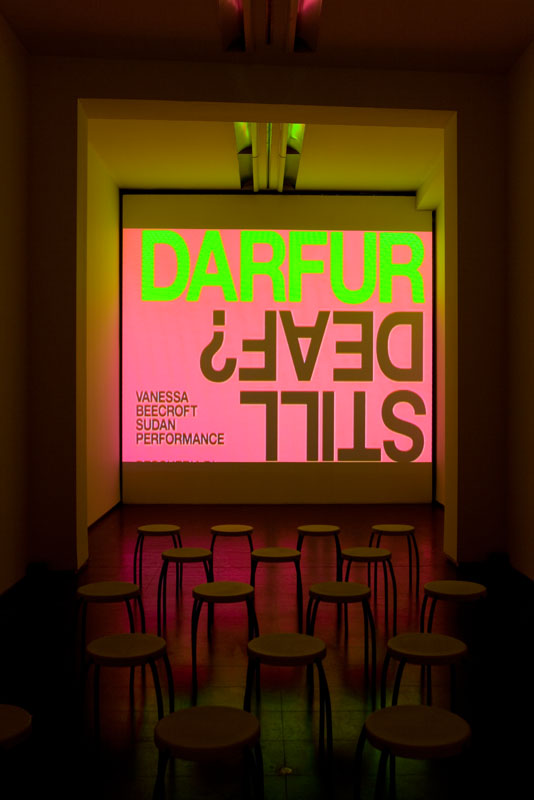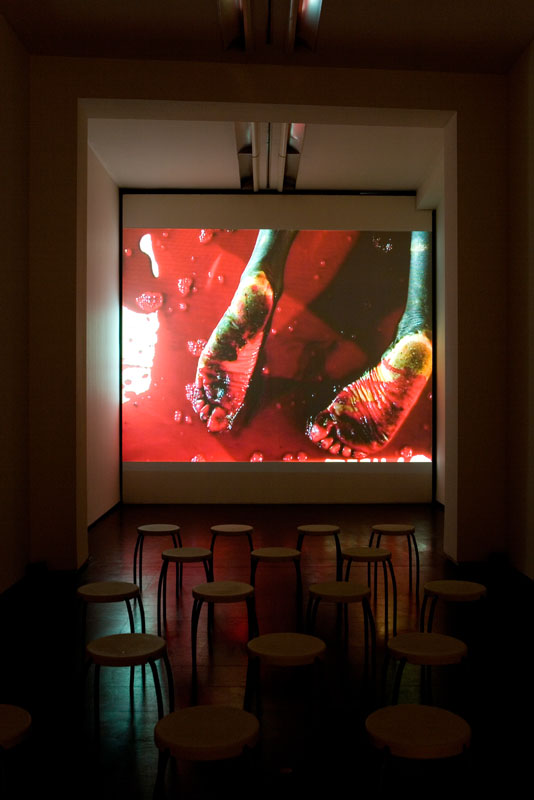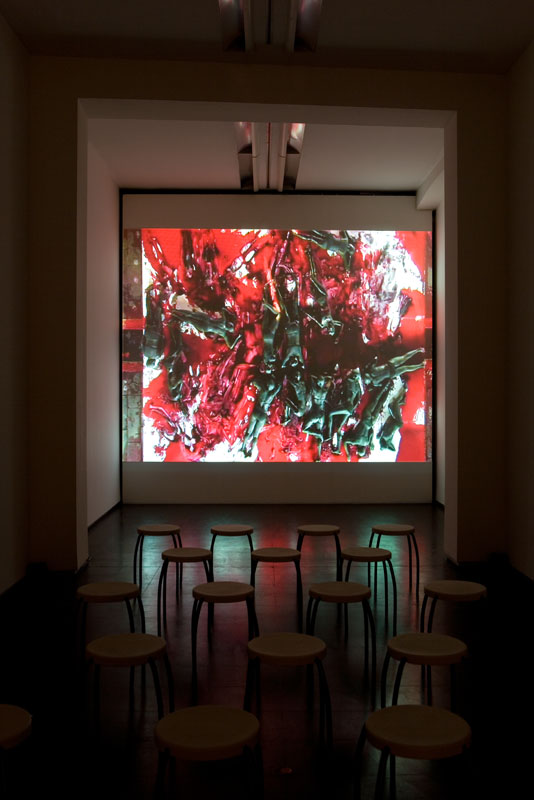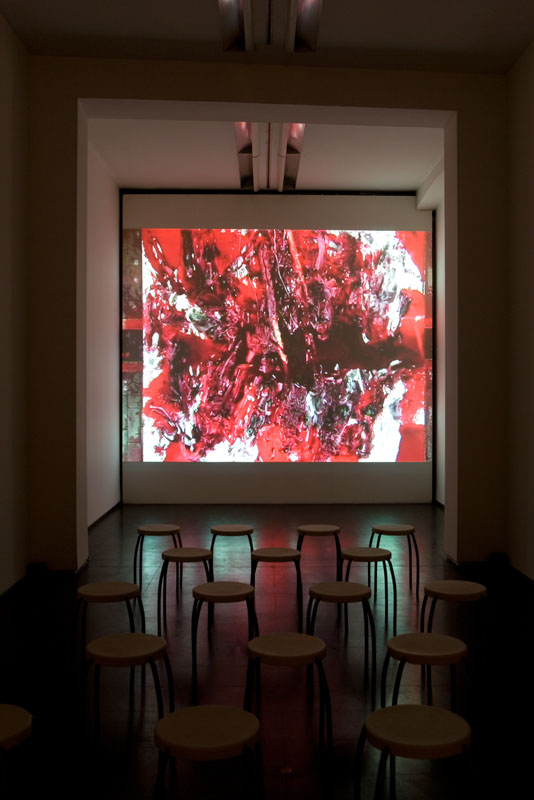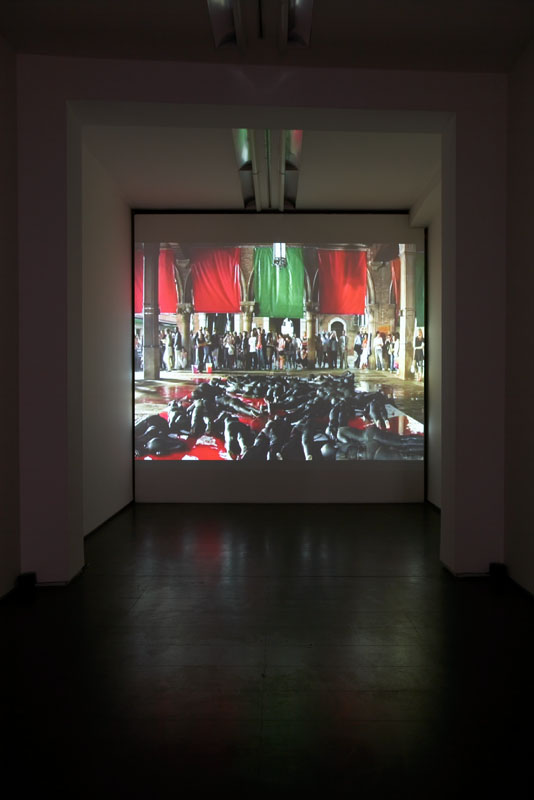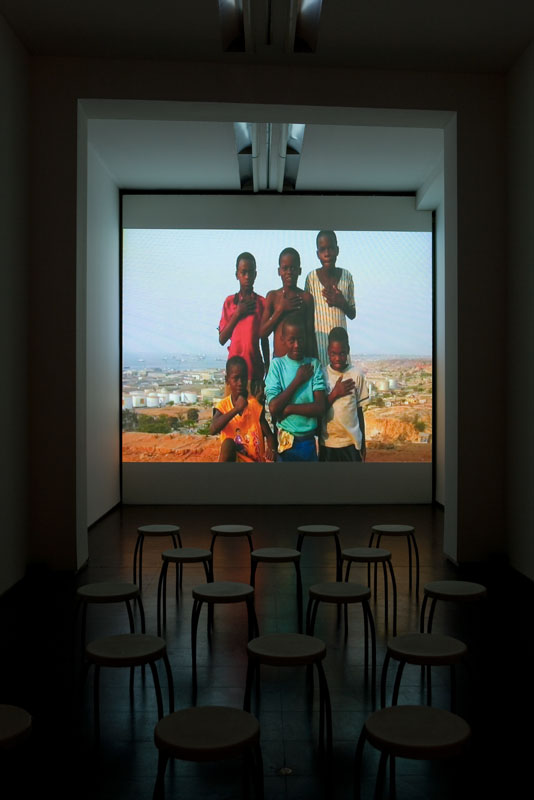The idea behind the show was the need to keep our attention focused on the emergencies in the contemporary world. VB61 Still Death! Darfur Still Deaf? is the video that documents the performance of Vanessa Beecroft, performed in June 2007 in Venice as a fringe event of the 52nd Venice Biennial. The performance is yet another part of the South Sudan project which was begun following several stays in the African state of Sudan, with a series of photographs already displayed in the Lia Rumma Gallery in September 2006. The performance is the symbolic representation of the tragic genocide currently taking place in the region of Darfur. Thirty Sudanese women lie on a white canvas; their motionless bodies are marked by brushstrokes and drips of blood red paint which spills over the edge of the canvas. The action is reduced to minimal movements in order to allow the image to become fixed and emerge in all its power, emphasising the sense of tragedy.
The video Muxima (2005) by the Chilean artist Alfredo Jaar is a melancholic elegy dedicated to the Angolan people. Arranged in 10 cantos accompanied by various versions of the famous Angolan song Muxima – which means “heart” in the kimbundu language– the video describes 10 stories which provide a portrait of a country devastated by civil war over the course of almost thirty years. The country has undergone many conquests in its history due to its extraordinary wealth of natural resources such as oil and diamonds. Despite this, thug, its population lives in total poverty and has been decimated by AIDS. Its survival is constantly threatened by the inaccessibility of medical services and the millions of anti-personnel mines strewn over its land.
Tide Table by William Kentridge is a videoanimation made in 2003, the last in a series of 9 works, entitled Drawing for Projection, whose protagonist is Soho Eckstein, a greedy and unscrupulous businessman. The works deal with the historical events in South Africa from the days of apartheid to its end and the search for normalisation. Tide Table is actually the most intimate of these films. Set on a beach, it is part of Soho’s personal memories shown through the tragic images of hospital beds, famine and epidemics. In contrast to the previous two films, water becomes the bearer of death and a metaphor for deletion.
